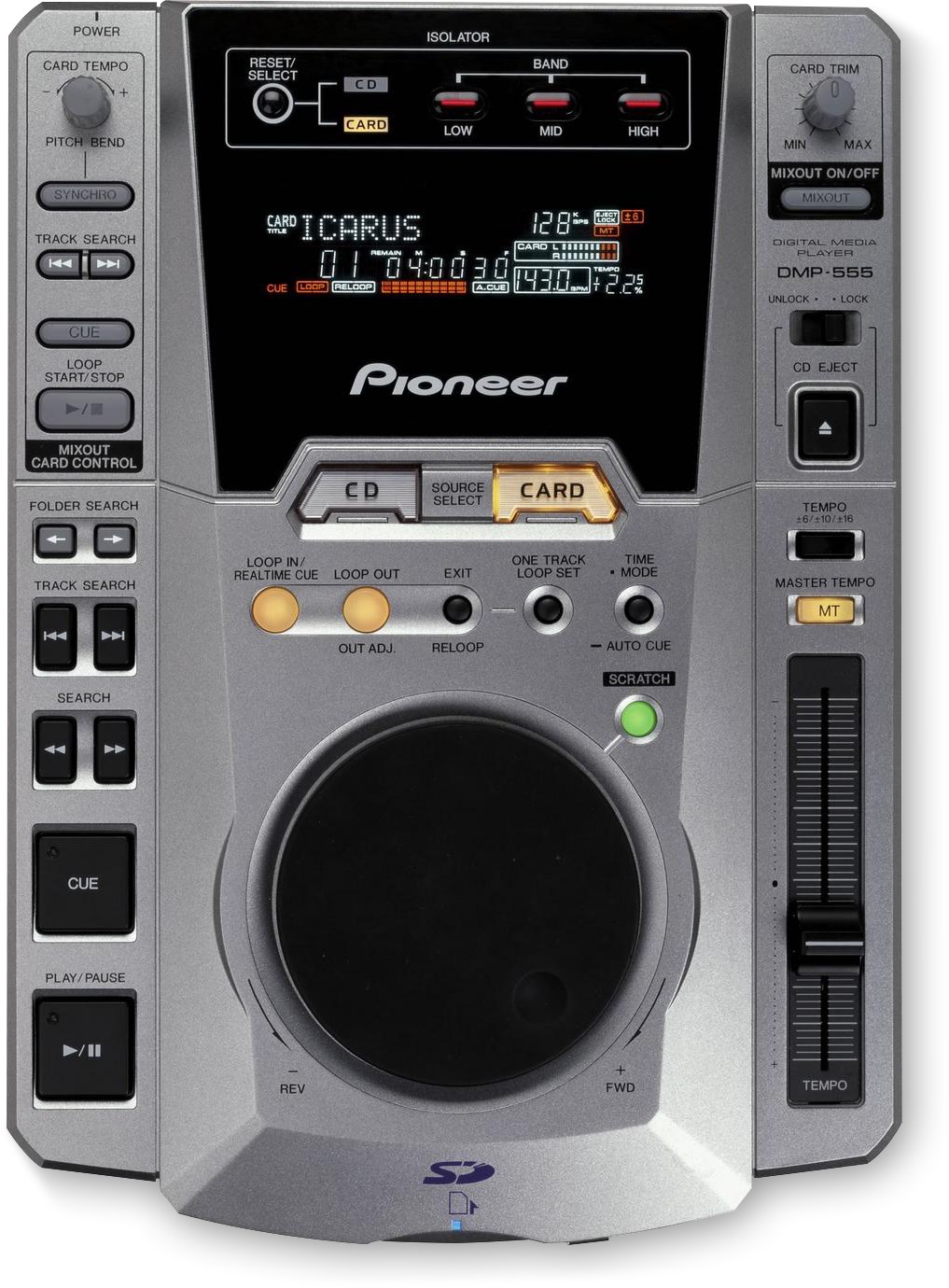The DMP-555 wasn’t done there, though. It also had three-band total kill isolators, which removed the lows, mids or highs from a track at the push of a button. It had a scratch mode on the jog wheel for emulating vinyl manipulation, like the flagship CDJ-1000, while also incorporating key features from that unit, like Loop In and Out buttons and variable pitch ranges. As a bonus it had a compact design and looked slick.
“I’d heard of [the DMP-555] in the past,” the Australian DJ Adam Chesters wrote in a blog post on the history of the CDJ, “although 95% of my DJ colleagues swore it was a fake… This deck was so far ahead of its time that I reckon some back-to-the-future shit was going on when they came up with it.”
The story of the DMP-555 is actually a bit like the guitar solo scene at the end of Back to the Future. In 1955, the time-travelling lead character, Marty McFly, rocks a school dance with a rendition of the future smash “Johnny B. Goode”—only to lose himself in an outrageous guitar solo that kills the party. “I guess you guys aren’t ready for that yet,” he says.
Jeroen Groenendijk remembers DJs’ early reactions to the unit. “There were no DJs already using SD cards as media, nor did most of them really understand how that would work,” he said. “So with the DMP-555 we had to educate DJs that SD would be the media for the future. Only a few would believe me.”
The software required a further leap of faith. In 2002, programmes like Traktor DJ Studio 1 were on the market, but DJing with software was hardly a mainstream concept. “Artists tried the software, but just like with the SD card, the tech was years ahead of what the users were used to, so it got picked up by very few people.”
Jeroen added that, “The software was not working smoothly. This might have been because computers in those days, and especially laptops, were not nearly as powerful as today, so most laptops struggled in running the software smoothly.”
“At that time, most people thought that MP3 was not suitable for DJing because the sound quality was not good enough,” said Kazuo Ishikawa of Pioneer DJ’s hardware design department. “Also the big jog wheel was what DJs had been waiting for, so the CDJ-1000 had too big an impact for the DMP-555 to stand out at all.”








